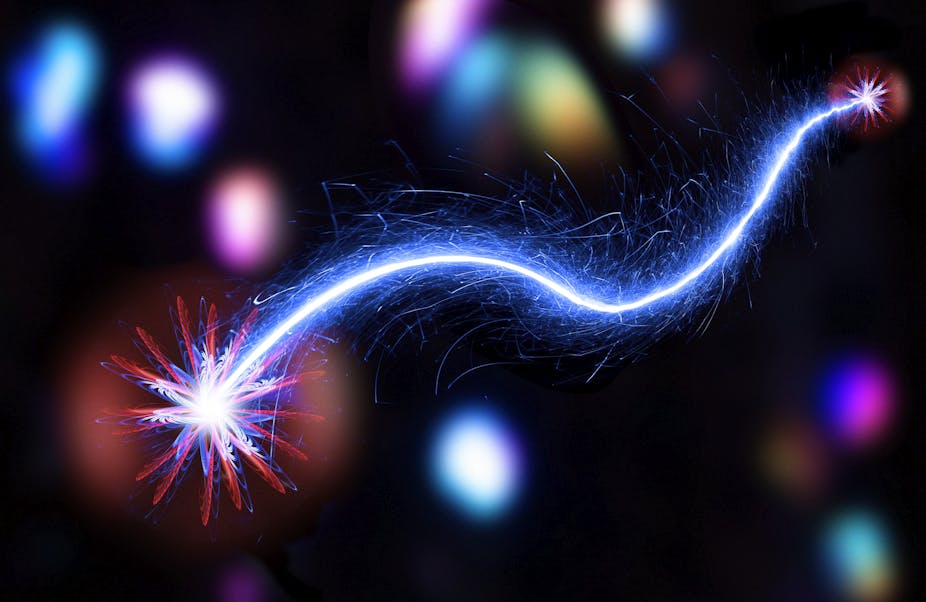for experiments with entangled photons, establishing the violation of Bell inequalities and pioneering quantum information science
nobelprize.org
The Royal Swedish Academy of Sciences has decided to award the Nobel Prize in Physics 2022 to
Alain Aspect
Université Paris-Saclay and
École Polytechnique, Palaiseau, France
John F. Clauser
J.F. Clauser & Assoc., Walnut Creek, CA, USA
Anton Zeilinger
University of Vienna, Austria



Anton Zeilinger, a quantum scientist from Austria and the 2022 winner of the Nobel Prize in physics, was born on May 20, 1945. Zeilinger is an emeritus professor of physics at the University of Vienna and a senior researcher at the Austrian Academy of Sciences' Institute for Quantum Optics and Quantum Information. The majority of his research focuses on the foundations and uses of quantum entanglement.
For his "pioneering conceptual and practical contributions to the foundations of quantum physics, which have emerged as the cornerstone for the rapidly-evolving area of quantum information," Zeilinger was awarded the inaugural Inaugural Isaac Newton Medal of the Institute of Physics, London in 2007. Together with Alain Aspect and John Clauser, he shared the Nobel Prize in Physics in October 2022 for their excellent work including experiments with entangled photons, proving the violation of Bell inequalities, and developing the field of quantum information science.
John Clauser developed John Bell’s ideas, leading to a practical experiment. When he took the measurements, they supported quantum mechanics by clearly violating a Bell inequality. This means that quantum mechanics cannot be replaced by a theory that uses hidden variables.
Some loopholes remained after John Clauser’s experiment. Alain Aspect developed the setup, using it in a way that closed an important loophole. He was able to switch the measurement settings after an entangled pair had left its source, so the setting that existed when they were emitted could not affect the result.
Using refined tools and long series of experiments, Anton Zeilinger started to use entangled quantum states. Among other things, his research group has demonstrated a phenomenon called quantum teleportation, which makes it possible to move a quantum state from one particle to one at a distance.
“It has become increasingly clear that a new kind of quantum technology is emerging. We can see that the laureates’ work with entangled states is of great importance, even beyond the fundamental questions about the interpretation of quantum mechanics,” says Anders Irbäck, Chair of the Nobel Committee for Physics.

Quantum teleportation is a technique for transferring quantum information from a sender at one location to a receiver some distance away. While teleportation is commonly portrayed in science fiction as a means to transfer physical objects from one location to the next, quantum teleportation only transfers quantum information. The sender does not have to know the particular quantum state being transferred. Moreover, the location of the recipient can be unknown, but to complete the quantum teleportation, classical information needs to be sent from sender to receiver . Because classical information needs to be sent, quantum teleportation cannot occur faster than the speed of light.
Bell's theorem is a term encompassing a number of closely related results in physics, all of which determine that quantum mechanics is incompatible with local hidden-variable theories. The "local" in this case refers to the principle of locality, the idea that a particle can only be influenced by its immediate surroundings, and that interactions mediated by physical fields can only occur at speeds no greater than the speed of light. "Hidden variables" are hypothetical properties possessed by quantum particles, properties that are undetectable but still affect the outcome of experiments. In the words of physicist John Stewart Bell, for whom this family of results is named, "If [a hidden-variable theory] is local it will not agree with quantum mechanics, and if it agrees with quantum mechanics it will not be local
Quantum entanglement is the physical phenomenon that occurs when a group of particles are generated, interact, or share spatial proximity in a way such that the quantum state of each particle of the group cannot be described independently of the state of the others, including when the particles are separated by a large distance. The topic of quantum entanglement is at the heart of the disparity between classical and quantum physics: entanglement is a primary feature of quantum mechanics not present in classical mechanics.
